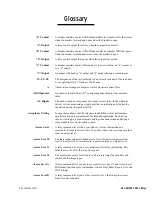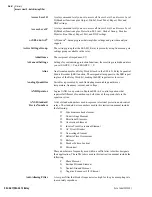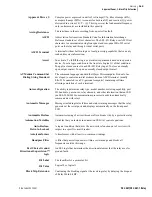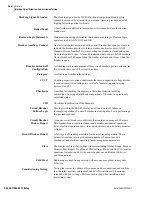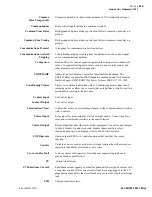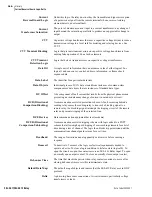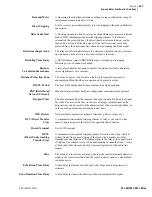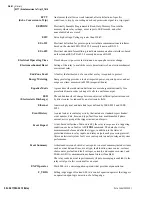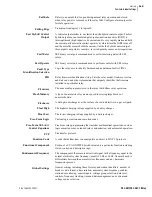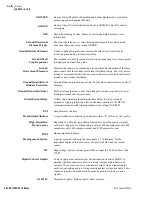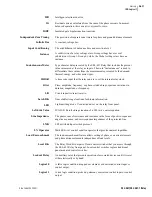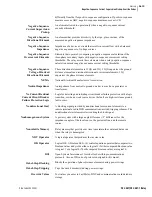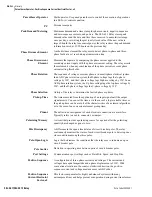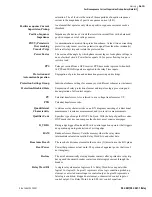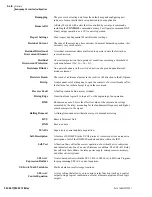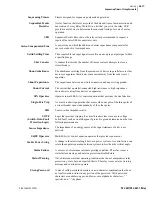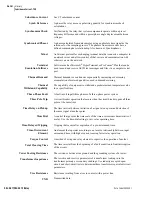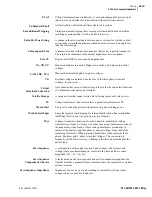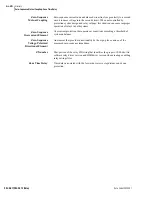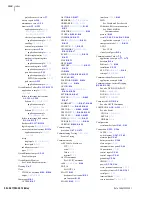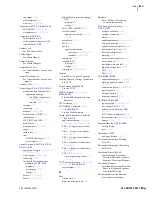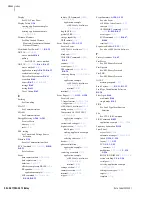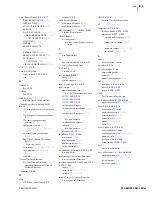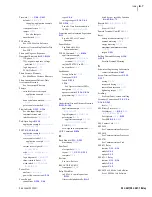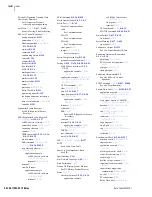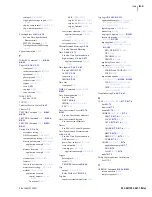
GL.14
SEL-421/SEL-421-1 Relay
Date Code 20020501
Glossary
Parentheses Operator
—
Positive-Sequence Current Restraint Factor, a2
Parentheses Operator
Math operator. Use paired parentheses to control the execution of operations
in a SEL
OGIC
control equation.
PC
Personal computer.
Peak Demand Metering
Maximum demand and a time stamp for phase currents, negative-sequence
and zero-sequence currents, and powers. The SEL-421 Relay stores peak
demand values and the date and time these occurred to nonvolatile storage
once per day, overwriting the previously stored value if the new value is
larger. Should the relay lose control power, the relay restores the peak demand
information saved at 23:50 hours on the previous day.
Phase Distance Element
A mho distance element the relay uses to detect phase-to-phase and three-
phase faults at a set reach along a transmission line.
Phase Overcurrent
Element
Elements that operate by comparing the phase current applied to the
secondary current inputs with the phase overcurrent setting. The relay asserts
these elements when any combination of the phase currents exceeds phase
current setting thresholds.
Phase Rotation
The sequence of voltage or current phasors in a multiphase electrical system.
In an ABC phase rotation system, the B-phase voltage lags the A-phase
voltage by 120°, and the C-phase voltage lags B-phase voltage by 120°. In an
ACB phase rotation system, the C-phase voltage lags the A-phase voltage by
120°, and the B-phase voltage lags the C-phase voltage by 120°.
Phase Selection
Ability of the relay to determine the faulted phase or phases.
Pickup Time
The time measured from the application of an input signal until the output
signal asserts. You can set the time, as in the case of a logic variable timer, or
the pickup time can be a result of the characteristics of an element algorithm,
as in the case of an overcurrent element pickup time.
Pinout
The definition or assignment of each electrical connection at an interface.
Typically refers to a cable, connector, or jumper.
Polarizing Memory
A circuit that provides a polarizing source for a period after the polarizing
quantity has changed or gone to zero.
Pole Discrepancy
A difference in the open/closed status of circuit breaker poles. The relay
continuously monitors the status of each circuit breaker pole to detect open or
close conditions among the three poles.
Pole-Open Logic
Logic that determines the conditions that the relay uses to indicate an open
circuit breaker pole.
Pole Scatter
Deviation in operating time between pairs of circuit breaker poles.
Port Settings
Communications port settings such as Data Bits, Speed, and Stop Bits.
Positive-Sequence
A configuration of three-phase currents and voltages. The currents and
voltages have equal magnitude and a phase displacement of 120°. With
conventional rotation in the counter-clockwise direction, the positive-
sequence current and voltage maxima occur in ABC order.
Positive-Sequence
Current Restraint
Factor, a2
This factor compensates for highly unbalanced systems with many
untransposed lines and helps prevent misoperation during current transformer
Summary of Contents for SEL-421
Page 8: ...This page intentionally left blank ...
Page 30: ...This page intentionally left blank ...
Page 110: ...This page intentionally left blank ...
Page 204: ...This page intentionally left blank ...
Page 284: ...This page intentionally left blank ...


